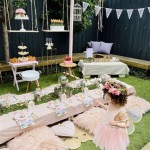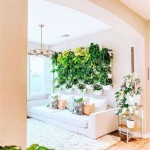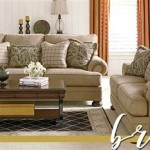How to Decorate a Big Wall with a TV
A large, blank wall can present a decorating challenge, particularly when a television is the central focus. Successfully integrating a TV into a cohesive design requires careful planning and consideration of various aesthetic and functional elements. The goal is to create a visually appealing space that complements the television without it becoming an overwhelming eyesore. This article will explore several strategies for decorating a large wall incorporating a television, emphasizing balance, style, and practicality.
Key Point 1: Achieving Visual Balance Around the TV
The primary concern when decorating a wall with a TV is ensuring visual balance. A large, dark rectangle can easily dominate a space, throwing off the overall harmony. The first step involves assessing the size of the wall and the dimensions of the television. This assessment will dictate the scale of other elements to be incorporated.
One effective technique for creating balance is to use symmetry. Flanking the television with identical elements on either side can establish a sense of order and visual equilibrium. These elements could include matching bookshelves, cabinets, or even framed artwork. The key is to choose items that have a similar weight and height to create a balanced look.
An alternative approach involves asymmetry. While symmetry is more straightforward, asymmetry can create a more dynamic and visually interesting space. This involves using elements of varying sizes and shapes to balance the TV. For example, on one side of the TV, you might have a tall, narrow bookcase filled with decorative objects, while on the other side, you could incorporate a cluster of framed prints or a sculptural element. The aim is to distribute visual weight evenly, preventing the eye from focusing solely on the television.
Color plays a crucial role in achieving balance. Dark colors tend to attract the eye, so consider using lighter colors or contrasting shades around the TV to soften its impact. A dark-colored wall behind the TV can help it blend in, while lighter-colored elements around it can draw attention to other parts of the wall. Similarly, incorporating textures can add visual interest and prevent the space from feeling flat or monotonous.
In addition to furniture and artwork, consider incorporating lighting to create balance. Position lamps on either side of the television or install sconces above it to create a soft, ambient glow. This will not only enhance the overall aesthetic but also help to reduce eye strain when watching television in a dimly lit room. The type of lighting should complement the style of the room and effectively illuminate the surrounding décor.
Key Point 2: Integrating Storage and Functionality
A large wall provides an excellent opportunity to incorporate storage solutions while simultaneously enhancing the aesthetic appeal of the space. Integrating storage can help to declutter the room and provide functional benefits alongside purely decorative ones. There are several approaches to consider, depending on the style and needs of the space.
Built-in shelving units are a popular choice for maximizing storage and creating a seamless look. These units can be custom-designed to fit the exact dimensions of the wall and to accommodate specific storage needs. Built-ins can be painted to match the wall color for a discreet look, or they can be finished in a contrasting color to create a focal point. Consider incorporating closed cabinets alongside open shelves to provide a combination of concealed and displayed storage.
Media consoles offer a more flexible and often more affordable storage solution. These consoles are designed specifically to house media equipment, such as DVD players, gaming consoles, and streaming devices. They typically feature shelves, drawers, and doors to keep cables and accessories organized and out of sight. Choose a media console that complements the style of the room and provides ample storage space for your needs.
Floating shelves are a minimalist option that can add visual interest to the wall without taking up floor space. These shelves can be used to display decorative objects, books, or plants, and they can be arranged in various configurations to create a unique and personalized look. Consider using different sizes and shapes of shelves to add dimension to the wall.
When incorporating storage, be mindful of the overall balance and flow of the room. Avoid overcrowding the wall with too many items, as this can make the space feel cluttered and overwhelming. Instead, focus on selecting a few key pieces that will add both functionality and visual appeal. Consider the depth of the storage units to ensure they do not protrude too far into the room, obstructing movement or creating a cramped feeling.
Furthermore, think about the accessibility of the storage solutions. Ensure that frequently used items are easily accessible, while less frequently used items can be stored in higher or deeper shelves. Labeling shelves and drawers can help to keep things organized and prevent clutter from accumulating.
Key Point 3: Incorporating Decorative Elements and Style
Beyond balance and functionality, incorporating decorative elements is crucial for transforming a bare wall into a stylish and inviting space. The choice of decorative elements should complement the overall style of the room and reflect personal taste. There are numerous options to consider, from artwork and mirrors to plants and textured panels.
Artwork is a classic way to add personality and visual interest to a wall. A large statement piece can serve as a focal point, while a gallery wall consisting of multiple smaller prints can create a more eclectic and personalized look. When choosing artwork, consider the color scheme and style of the room. Opt for pieces that complement the existing décor and evoke a sense of harmony.
Mirrors are a versatile decorative element that can enhance the sense of space and light in a room. A large mirror can make a small room feel larger, while strategically placed mirrors can reflect light and brighten up a dark space. Consider using mirrors with interesting frames or shapes to add visual interest to the wall. Placement is key: avoid placing mirrors directly opposite the television, as this can create distracting reflections.
Plants can bring life and vibrancy to a room, adding a touch of nature to the interior space. A large potted plant can fill an empty corner, while smaller plants can be displayed on shelves or ledges. Consider using a variety of plant sizes and textures to create visual interest. Choose plants that thrive in the lighting conditions of the room and that require minimal maintenance.
Textured panels offer a more contemporary way to add visual interest to a wall. These panels can be made from a variety of materials, such as wood, fabric, or metal, and they can feature intricate patterns or designs. Textured panels can be used to create a focal point behind the television or to add depth and dimension to the wall. They also offer acoustic benefits, helping to reduce echo and improve sound quality.
Wallpaper is another option for adding texture and pattern to a wall. Choose a wallpaper that complements the style of the room and that adds visual interest without being overwhelming. Consider using wallpaper on a single accent wall to create a focal point. Alternatively, you can use wallpaper to create a subtle backdrop for the television, helping it to blend in with the surrounding décor.
Lighting, as previously mentioned, is integral to the overall decorative scheme. Accent lighting, such as spotlights or track lighting, can be used to highlight specific artwork or decorative elements. This can draw attention to these features and create a more dynamic and visually appealing space. Consider using dimmers to adjust the intensity of the lighting and create a more relaxing atmosphere.
Ultimately, the best approach to decorating a large wall with a TV involves a combination of these strategies. By carefully considering balance, functionality, and style, it is possible to create a space that is both visually appealing and practical. The key is to experiment with different elements and arrangements until you find a combination that works best for your space and reflects your personal taste.

100 Best How To Decorate A Tv Wall Ideas Family Room Home Decor
How To Decorate A Blank Wall Around Tv 3 Genius Ideas Designed

How To Decorate Around A Tv Wall Decor Living Room

15 Ways To Decorate Around And Hide The Tv Thrifty Decor Diy Organizing

18 Stunning Ways To Decorate Around A Tv Twelve On Main

Telephant In The Room 3 Ways To Keep A Big Tv From Hitting Your Decor With Thud

40 Ideas For Decorating Around The Tv A House Full Of Sunshine

Ideas For Decorating A Tv Wall

I Like The Idea Of Adding Lighting To Space Setting It Off With Large Wall Decor Living Room Tv
:max_bytes(150000):strip_icc()/TristanThompson_ENC9-47915350d1bc496d9ad2b1714dff3334.jpg?strip=all)
How To Decorate Around A Tv On Wall







